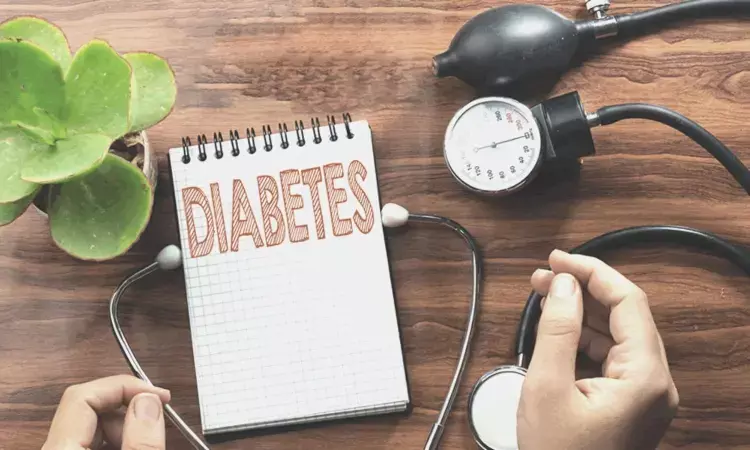- Home
- Medical news & Guidelines
- Anesthesiology
- Cardiology and CTVS
- Critical Care
- Dentistry
- Dermatology
- Diabetes and Endocrinology
- ENT
- Gastroenterology
- Medicine
- Nephrology
- Neurology
- Obstretics-Gynaecology
- Oncology
- Ophthalmology
- Orthopaedics
- Pediatrics-Neonatology
- Psychiatry
- Pulmonology
- Radiology
- Surgery
- Urology
- Laboratory Medicine
- Diet
- Nursing
- Paramedical
- Physiotherapy
- Health news
- Fact Check
- Bone Health Fact Check
- Brain Health Fact Check
- Cancer Related Fact Check
- Child Care Fact Check
- Dental and oral health fact check
- Diabetes and metabolic health fact check
- Diet and Nutrition Fact Check
- Eye and ENT Care Fact Check
- Fitness fact check
- Gut health fact check
- Heart health fact check
- Kidney health fact check
- Medical education fact check
- Men's health fact check
- Respiratory fact check
- Skin and hair care fact check
- Vaccine and Immunization fact check
- Women's health fact check
- AYUSH
- State News
- Andaman and Nicobar Islands
- Andhra Pradesh
- Arunachal Pradesh
- Assam
- Bihar
- Chandigarh
- Chattisgarh
- Dadra and Nagar Haveli
- Daman and Diu
- Delhi
- Goa
- Gujarat
- Haryana
- Himachal Pradesh
- Jammu & Kashmir
- Jharkhand
- Karnataka
- Kerala
- Ladakh
- Lakshadweep
- Madhya Pradesh
- Maharashtra
- Manipur
- Meghalaya
- Mizoram
- Nagaland
- Odisha
- Puducherry
- Punjab
- Rajasthan
- Sikkim
- Tamil Nadu
- Telangana
- Tripura
- Uttar Pradesh
- Uttrakhand
- West Bengal
- Medical Education
- Industry
Insulin resistance before diabetes onset may increase risk of albuminuria after diabetes onset: Study

USA: A prospective cohort study has revealed an association between lower insulin sensitivity and albuminuria development, suggesting a role for insulin signaling in the pathogenesis of proteinuria.
The findings, published in Diabetes, Obesity and Metabolism on February 28, 2024, highlight the potential of improving insulin signaling as a therapeutic strategy.
The study implies that maintaining good insulin action is important for preventing albuminuria onset and reducing the risk of kidney and cardiovascular diseases, particularly in nondiabetic individuals.
Albuminuria is a risk factor for cardiovascular (CV) events and mortality in the general population and among patients with diabetes mellitus. Understanding the pathophysiology of albuminuria is critical for targeting interventions to reduce albuminuria and accompanying outcomes. Reduced renal insulin signaling is implicated in the albuminuria pathogenesis.
Longitudinal studies linking insulin action and subsequent albuminuria risk are limited. Therefore, Douglas C. Chang, National Institutes of Health, Phoenix, Arizona, USA, and colleagues aimed to investigate whether insulin secretion and action, measured before diabetes onset, are associated with albuminuria development after diabetes onset.
For this purpose, the researchers measured Baseline body composition, insulin sensitivity by a hyperinsulinaemic-euglycaemic clamp at submaximal and maximal insulin stimulation (240 and 2400 pmol/m2/min; M-low and M-high), and insulin secretion by intravenous glucose tolerance test [acute insulin response (AIR)] in 170 Southwestern Indigenous American adults who subsequently developed diabetes.
After diabetes onset and during the median follow-up of 13.6 years, 81 participants developed albuminuria (urine albumin-to-creatinine ratio ≥30 mg/g). Separate associations of M-low, M-high, and AIR (per 1-SD change) with albuminuria risk were assessed by Cox regression models adjusted for sex, age, and body fat (%).
The researchers reported the following findings:
- Participants who developed albuminuria were of similar age (26.4 ± 5.4 vs. 27.5 ± 6.1 years), sex (46% vs. 48% male), body fat (36.4 ± 7.5 vs. 35.7 ± 7.9%) and AIR [2.3 ± 0.3 vs. 2.3 ± 0.3, pmol/L (log)] as those who did not develop albuminuria but had lower insulin sensitivity [M-low: 0.33 ± 0.08 vs. 0.36 ± 0.12; M-high: 0.87 ± 0.11 vs. 0.91 ± 0.12, p = .02; mg/kg-metabolic body size/min (log)].
- In separate adjusted models, lower M-low and M-high were both associated with an increased risk for albuminuria [hazard ratio (HR) 1.51, HR 1.31), whereas AIR was not (HR 1.15).
In conclusion, lower insulin action in Indigenous Americans without diabetes is a risk factor in albuminuria development after diabetes onset.
"These findings indicate insulin signaling as a possible therapeutic target for preventing cardiovascular and kidney disease," the researchers wrote.
Reference:
Willig MR, Stinson EJ, Looker HC, et al. Insulin resistance before type 2 diabetes onset is associated with increased risk of albuminuria after diabetes onset: A prospective cohort study. Diabetes Obes Metab. 2024;1‐9. doi:10.1111/dom.15505
Dr Kamal Kant Kohli-MBBS, DTCD- a chest specialist with more than 30 years of practice and a flair for writing clinical articles, Dr Kamal Kant Kohli joined Medical Dialogues as a Chief Editor of Medical News. Besides writing articles, as an editor, he proofreads and verifies all the medical content published on Medical Dialogues including those coming from journals, studies,medical conferences,guidelines etc. Email: drkohli@medicaldialogues.in. Contact no. 011-43720751


